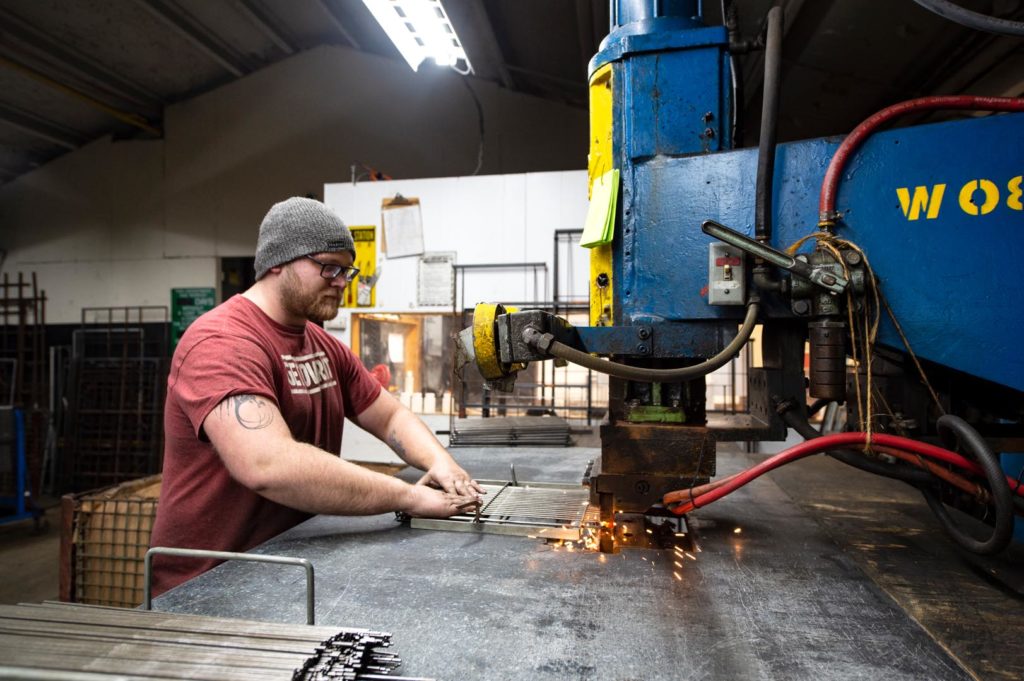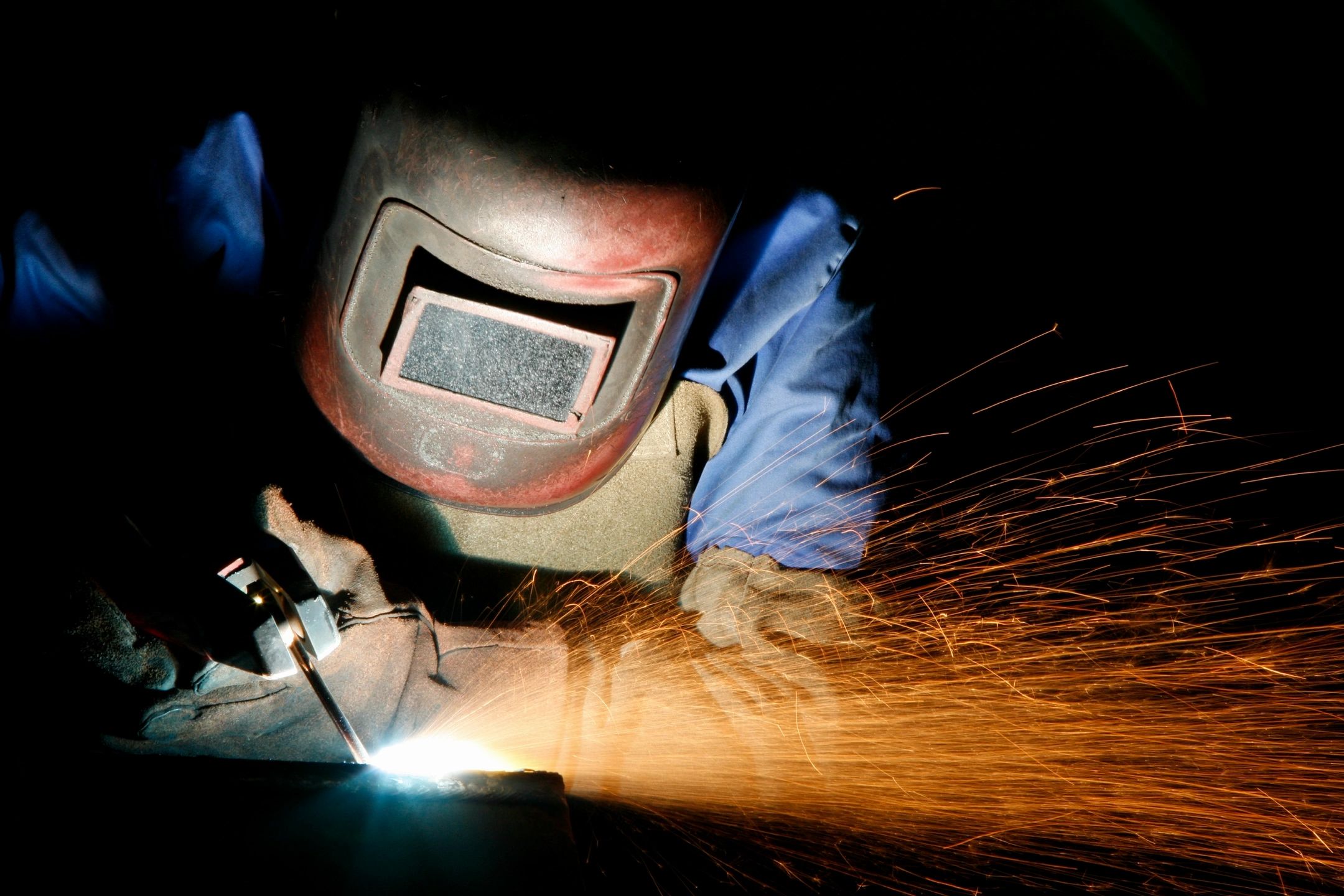Common Welding Repair Issues and How to Address Them Efficiently
Welding repair services usually run into a variety of concerns that can endanger the integrity of the end product. Typical troubles consist of poor penetration, porosity, and misalignment, among others. Each problem provides special challenges that need details methods for resolution. Recognizing these problems is important for welders aiming to boost their outcomes and abilities. This discussion will certainly discover these usual welding repair service concerns and effective methods to address them.
Inadequate Infiltration
Insufficient penetration occurs when the weld steel stops working to fully fuse with the base product, causing weak joints and prospective structural failures. This issue often originates from not enough warmth input, wrong electrode angle, or incorrect welding speed. Welders may run into poor infiltration because of a miscalculation of the necessary specifications for a details material thickness or type. In addition, contamination on the base material's surface area can impede efficient bonding, worsening the issue. To address insufficient penetration, welders should assure proper setups on their devices and maintain a tidy work surface area. Regular assessment of welds is advised to determine any type of shortages early, permitting prompt improvements and the prevention of jeopardized structural integrity in welded settings up.
Porosity
Porosity is an usual flaw in bonded joints that shows up as little gas bubbles caught within the weld steel. This issue can jeopardize the stability of the weld, bring about decreased toughness and potential failure under stress and anxiety. Belgrade. Porosity normally emerges from contamination, wetness, or incorrect welding strategies, which enable gases to leave into the liquified weld pool. To deal with porosity, welders ought to ensure appropriate surface area prep work, maintain a tidy workplace, and utilize ideal welding parameters. In addition, picking the appropriate filler product and shielding gas can alleviate gas entrapment. Regular examination and screening of welds can assist recognize porosity early, assuring timely restorative actions are taken, thereby protecting the high quality and reliability of the welded structure
Imbalance
Misalignment in welding can arise from different elements, including incorrect configuration and thermal growth. Understanding the source is essential for effective resolution. Several improvement methods are offered to straighten elements and guarantee structural integrity.
Reasons of Misalignment
Welding misalignment often originates from a range of underlying problems that can endanger structural integrity. One main cause is improper fit-up of elements prior to welding, which can result in voids and uneven surfaces. Variants in thermal growth during the welding procedure can additionally cause distortion, especially if the materials being joined have various coefficients of development. Additionally, poor clamping and fixturing may fail to hold elements safely in location, leading to motion throughout welding. Badly maintained tools, consisting of welding equipments and tools, might present inconsistencies in the weld grain, more adding to misalignment. Finally, operator error, stemming from insufficient training or experience, can additionally play a substantial role in creating misaligned welds.
Correction Techniques Available
Attending to misalignment properly needs a mix of restorative techniques customized to the particular problems handy. One common approach is the usage of components or jigs to hold components in the appropriate placement during welding, making certain consistent positioning. In addition, pre-heating the materials can help in reducing distortion and improve fit-up. For significant imbalance, mechanical realignment strategies, such as using hydraulic jacks or clamps, can be utilized to deal with the setting prior to welding. Post-weld warmth therapy might additionally be needed to relieve tensions triggered by imbalance. Cautious assessment and adjustment throughout the configuration phase can protect against imbalance issues from ending up being significant troubles, advertising a smoother welding procedure and improving total structural stability.
Distortion
Distortion is a typical obstacle in welding that can emerge from different factors, including unequal heating and air conditioning. Recognizing the sources of distortion is vital for carrying out reliable prevention strategies. Resolving this problem not only improves structural integrity however also improves the general quality of the weld.
Reasons of Distortion
When subjected to the intense heat of welding, materials commonly undertake adjustments that can cause distortion. This phenomenon mainly arises from thermal growth and tightening during the welding procedure. As the weld location heats up, the material increases; upon air conditioning, it contracts, which can produce internal stresses. In enhancement, uneven home heating throughout a work surface can aggravate these stress and anxieties, causing warping or bending. The sort of material also plays a substantial function; metals with differing thermal conductivity and coefficients of growth might react differently, bring about uncertain distortions. In addition, poor joint style and inadequate fixturing can contribute to misalignment during welding, raising the chance of distortion. Understanding these reasons is essential for reliable welding repair and prevention approaches.
Prevention Techniques
Effective avoidance strategies for distortion learn the facts here now during welding concentrate on regulating heat input and ensuring correct joint layout. Maintaining a consistent warmth input helps to reduce thermal development and contraction, which can result in distortion. Utilizing techniques such as pre-heating the workpiece can additionally lower the temperature level gradient, promoting uniform heating. In addition, choosing proper joint layouts, such as T-joints or lap joints, can boost stability and decrease anxiety concentrations. Executing appropriate fixturing to secure the workpieces in position better aids in maintaining placement during the welding procedure. Ultimately, staggered welding series can disperse heat much more equally, preventing local distortion. By using these techniques, welders can considerably decrease the likelihood of distortion and improve the overall high quality of their welds.
Breaking
Cracking is a typical issue come across in welding repair work, typically resulting from numerous aspects such as incorrect air conditioning prices, product choice, or insufficient joint preparation. The event of fractures can considerably compromise the honesty of the weld, causing possible failings during operation. To resolve this concern, welders need to first examine the root creates, ensuring that materials work and suitably chosen for the certain application. Additionally, regulating the cooling price during the welding procedure is necessary; quick cooling can generate stress and lead to splitting. Appropriate joint design and preparation additionally add to decreasing the risk. Implementing these methods can improve weld high quality and durability, ultimately lowering the likelihood of fracturing in ended up weldments.

Incomplete Fusion
A significant issue in welding fixings is insufficient fusion, which takes place when the weld metal does not properly bond with the base product or previous weld passes - Montana Mobile Welding and Repair Belgrade Fabrication. This issue can cause weak points in the joint, potentially endangering the integrity of the bonded structure. Factors adding to incomplete combination include inadequate warm input, inappropriate welding technique, and contamination of the surface areas being joined. To address this problem efficiently, welders must guarantee correct pre-weld cleaning and surface area prep work, as well as readjust their welding specifications to achieve adequate infiltration and fusion. Regular inspection during the welding process can also aid recognize incomplete fusion early, permitting timely rehabilitative measures to improve the general high quality of the weld
Overheating
While welding repairs can improve structural stability, overheating presents a considerable difficulty that can lead to product degradation. Extreme warmth during welding can change the mechanical residential properties of steels, causing reduced strength, increased brittleness, and bending. This sensation is particularly crucial in high-stress applications where structural integrity is extremely important. Determining overheating can involve aesthetic assessments for staining or distortion, along with monitoring temperature during the welding process. To mitigate the threats connected with getting too hot, welders need to utilize ideal methods, such as controlling heat input, adjusting travel speed, and utilizing suitable filler materials. In addition, carrying out pre- and post-weld warm therapies can assist recover material buildings and you could try this out boost the total quality of the repair, guaranteeing long-term efficiency and security.
Frequently Asked Inquiries
What Are the Common Indicators of a Welding Defect?

Exactly How Can I Check My Welds for Quality?
To examine welds for top quality, one can utilize visual examinations, ultrasonic testing, and radiographic approaches. Each technique assures architectural honesty, recognizes defects, and confirms adherence to specified standards, ultimately enhancing the dependability of the welded joints.
What Safety Safety Measures Should I Take While Welding?
When welding, one should prioritize security by putting on proper personal protective equipment, making sure appropriate air flow, securing combustible materials away, keeping a tidy workspace, and being conscious of surroundings to avoid injuries and accidents.
Can I Fix a Weld Without Remodeling the Entire Joint?
Repairing a weld without remodeling the whole joint is possible, relying on the damages (Belgrade). Techniques such as grinding, adding read the article filler material, or utilizing a welding process can efficiently address details imperfections while protecting the bordering framework
What Devices Are Necessary for Effective Welding Repairs?
Crucial tools for reliable welding repair services consist of a welding device, cable brush, mill, protective equipment, clamps, and filler materials. Each tool plays a crucial function in ensuring high quality and safety throughout the repair work procedure. Porosity normally develops from contamination, moisture, or incorrect welding techniques, which enable gases to get away into the molten weld swimming pool. Poorly kept tools, including welding machines and devices, might present disparities in the weld grain, additional adding to imbalance. When subjected to the intense warm of welding, products commonly undertake changes that can lead to distortion. Breaking is a typical problem experienced in welding repair services, often resulting from different aspects such as inappropriate air conditioning rates, material selection, or insufficient joint prep work. A considerable problem in welding fixings is insufficient blend, which takes place when the weld metal does not appropriately bond with the base product or previous weld passes.